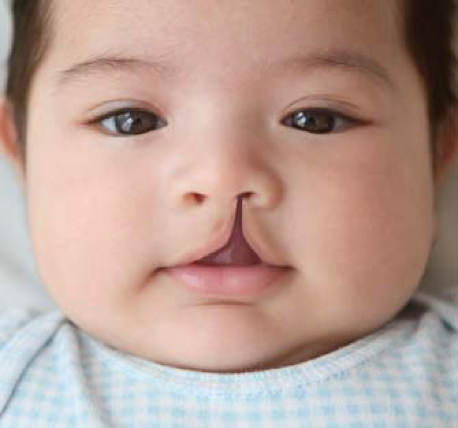Blog
Cleft Lip & Cleft Palate
A cleft is an opening in a normally closed structure. Cleft lip, therefore, is an opening in the lip, usually the upper lip. Lower lip clefting is very rare. Clefts of the lips alone are very rare; they are usually associated with cleft of the palate. Cleft of the palate are often not associated with cleft lips, however. Cleft lips are often unilateral than bilateral, and they occur more frequently on the left side than on the right side. Rare bilateral lip clefts have an even greater tendency to coexist with palatal cleft than unilateral left lip clefts do. Cleft lips alone rarely result in speech disorders and are less frequently associated with other genetic anomalies than palatal clefts. Clefting is a congenital disorder, meaning it is present from birth. Congenital disorders may or may not be inherited.
Palatal clefts are various congenital malformations resulting in an opening in the hard palate, the soft palate or both. These malformations are due to disruptions of the embryonic growth processes, resulting in a failure to fuse structures that are normally fused. Cleft palates may be a part of a genetic syndrome with other anomalies. It is now belived that clefting of the lip and palate is etiologically different from clefting of the palate only. Generally, males tend to exhibit a higher frequency and greater severity of cleft lip (with or without cleft palate) than females, who tend to exhibit higher frequency of palatal clefts (without the cleft lip).
- Etiology:
- Genetic abnormalities
- Autosomal dominiant ingeretance in some syndromes (e.g., Apert syndrome, Stickler syndrome, Van der Woude syndrome, Waardenburg syndrome, and Treacher-Collins syndrome)
- Recessive genetic ingeritance in some syndromes (e.g., orofacial-digital syndrome)
- X-linked ingeritance in some syndromes (e.g., oto-palatal-digital syndrome)
- Chromosomal abnormalities (e.g., Trisomy 13)
- Environmental teratogenic factors
- Fetal alcohol syndrome
- Illegal drug use
- Side effects of some prescription drugs (e.g., anticonvulsant drugs or thalidomide, a sedative)
- Rubella
- Mechanical factors
- Intrauterine crowding
- Twinning
- Uterine tumor
- Amniotic ruptures
- Genetic abnormalities
Communication disorders associated with clefts include hearing loss (e.g., middle ear infections and hearing loss), speech sound disorders (e.g., difficulty with unvoiced sounds, difficulty with sibilants /s, z/, difficulty with fricatives, affricates and plosives, and sound substitutions), language disorders (e.g., expressive language delays) and laryngeal and phonatory disorders (e.g., vocal nodules, hypertrophy and edema of the vocal folds, hoarseness, reduced vocal intensity, hypernasality, hyponasality, denasality, or combination). Children who are born with cleft lip and/or palate will most often require intervention, specifically speech-language therapy to address deficits within resonance, voice and/or expressive speech skills.

Gabrielle Cormace MS CF-SLP
Resource: Roseberry-McKibbin, C., & Hegde, M. (2016). An Advanced Review of Speech-Language Pathology. Austin, TX: Pro-ed.




